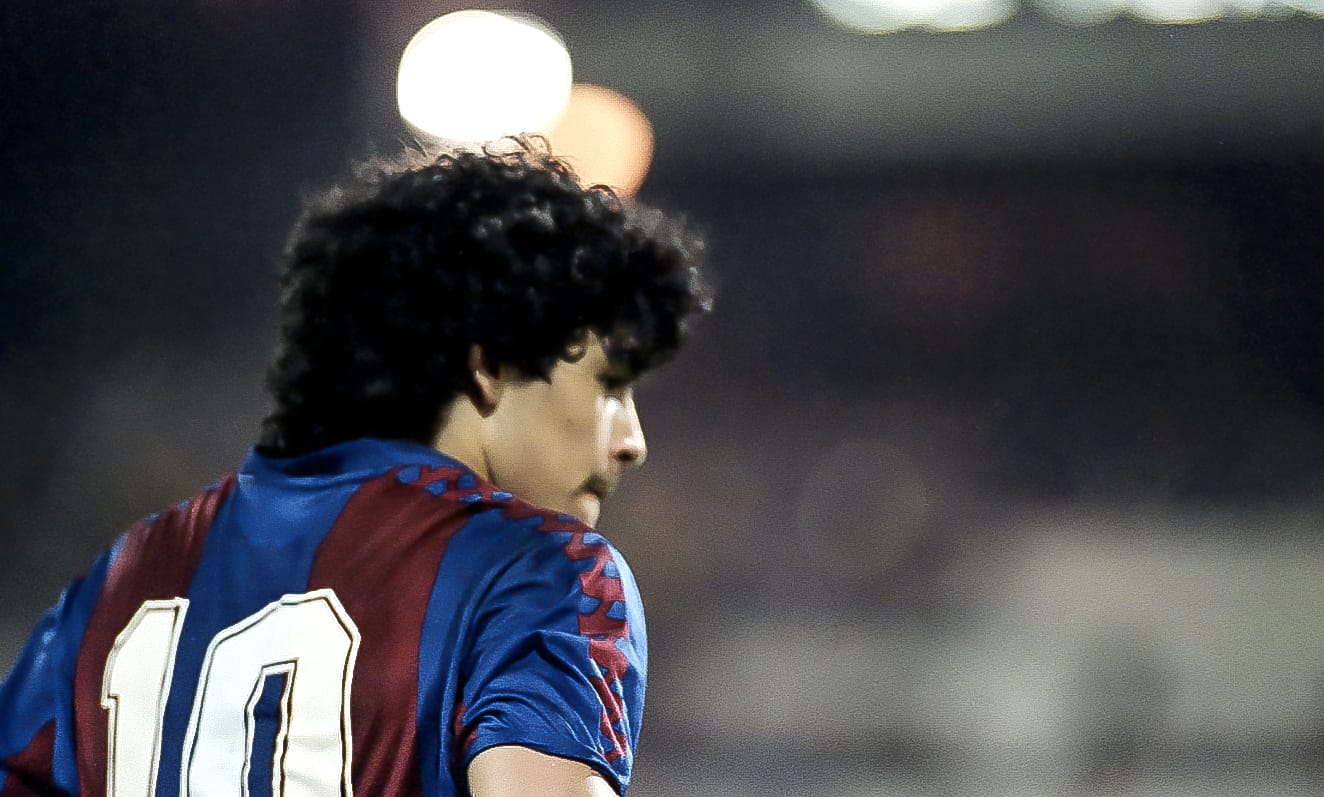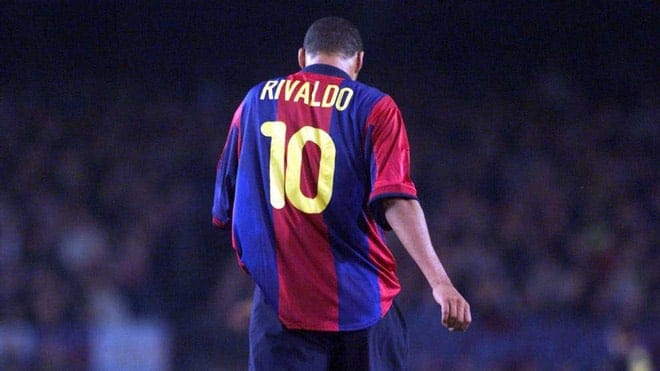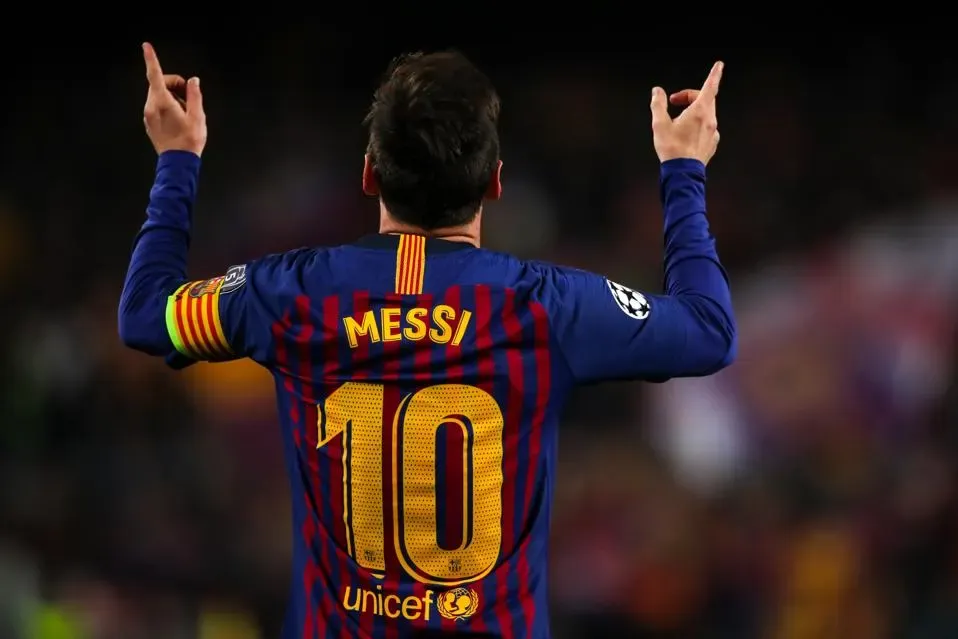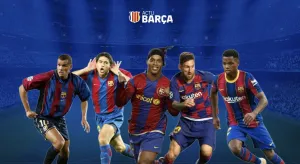Lamine Yamal has officially inherited the most iconic number 10 shirt in FC Barcelona’s history. A number worn by legends, it's more than just a digit on a jersey; it’s a symbol of creativity, leadership, magic, and greatness at the club. Here's a look back at the historic journey of the Barça number 10 shirt, now passed on to an 18-year-old prodigy.
Shirt numbers began to be used in Spanish football in the late 1940s. At the time, they weren't fixed; players could wear different numbers each match. Barça’s legendary des les Cinc Copes (five trophies) team was the first where numbers became more visible, with stars like László Kubala without exclusivity.
Luis Suárez Miramontes: Spain’s first Ballon d’Or Winner
Although the number 10 shirt Barça’s des les Cinc Copes usually belonged to Jordi Vila, the first undisputed number 10 was Luis Suárez Miramontes, a left-footed midfield genius and the only Spaniard to win the Ballon d'Or. In the 1950s, he embodied the elegance and intelligence expected from a number 10.
Fusté and Asensi: Leadership in Midfield
The 1960s, which were not a brilliant decade for the Catalans, saw Josep Maria Fusté wear the shirt frequently, before the armband and the 10 jersey passed to Juan Manuel Asensi. A consistent and injury-free midfielder through the 1970s, Asensi led by example, famously lifting the Cup Winners' Cup in Basel.
Sotil: Mommy, we are champions
In a rare gesture, Asensi gave up the number 10 to Peruvian playmaker Hugo Sotil in the 1973–74 and 1975–76 seasons. Sotil brought flair and goals, famously shouting “Mamita, somos campeones!” after winning the 1974 league title.
Maradona and Archibald: From Genius to Surprise
The arrival of Diego Maradona in 1982 made the number 10 a global symbol. Yet his time was mixed; brilliant moments were shadowed by injuries and controversies. After his departure, Steve Archibald, unexpectedly, wore the number.

Lineker and Roberto: A Shirt Without a Star
Post-Maradona, the shirt passed hands often. Gary Lineker, despite being more of a striker, wore it on occasions during his time at Barça, in addition to the numbers 8, 9, and 7 under Cruyff. But Roberto Fernández offered the closest resemblance to a true number 10 during the late 1980s. A year earlier, in the Copa del Rey final against Real Sociedad, the number 10 went to Lineker and the number 9 to Roberto, although Roberto played as a number 10 and Lineker as a number 9.
Romario: A Dream Team Icon
When Romario arrived under Johan Cruyff, he brought goals and swagger. Though a natural number 9, he wore the number 10 in Cruyff’s Dream Team, adding charisma and brilliance to the shirt’s legacy.
Guardiola and Hagi: An Atypical Era
In the 1992 Wembley final, the number 10 surprisingly went to Pep Guardiola, who played deep in midfield. Later, Gheorghe Hagi wore it during his stint, as the club transitioned to fixed numbers in the 1995-96 season.
Rivaldo: The Brazilian Genius
After Giovanni wore it in 1996, Rivaldo had to settle for the number 11. When the 10 became available, he finally claimed it, dazzling fans between 2000 and 2002 with spectacular goals and FIFA World Player in 1999 and the Ballon d'Or.

Riquelme: A Fallen Argentine Star
In 2002, Juan Román Riquelme arrived with expectations of being Maradona’s heir. Unfortunately, his time at Barça was short and turbulent, hindered by a lack of faith from then-coach Louis van Gaal.
Ronaldinho: The Resurgence of Magic
Then came Ronaldinho, the player who truly restored the magic of the number 10. His smile, samba skills, and leadership led Barça to La Liga glory and the 2006 Champions League title. He became the second Barça number 10 to win the Ballon d’Or.
Lionel Messi: The Greatest of All Time
After Ronaldinho, Lionel Messi elevated the number 10 to unimaginable heights. From 2008 to 2021, he defined a generation, winning 10 La Liga titles, four Champions Leagues, six Ballon d'Ors, and countless individual records. For many, Messi and the number 10 are inseparable.

Ansu Fati – The Heir Who Struggled
When Messi left in 2021, La Masia graduate Ansu Fati took over the sacred shirt. Though he started brightly, recurring injuries derailed his rise. After three surgeries and a loan move to Brighton, he now joins AS Monaco.
Lamine Yamal: The New Chapter Begins
Now, at just 18, Lamine Yamal becomes the new bearer of Barça’s number 10. A dazzling talent who’s already a poster boy and Spain international, he has the vision, technique, and boldness to make the shirt his own.
From Luis Suárez Miramontes to Messi, the Barça number 10 has passed through generations of greatness. Lamine Yamal doesn’t just inherit a number; he inherits a legacy. One that demands brilliance, creativity, and leadership on the world’s biggest stages.


